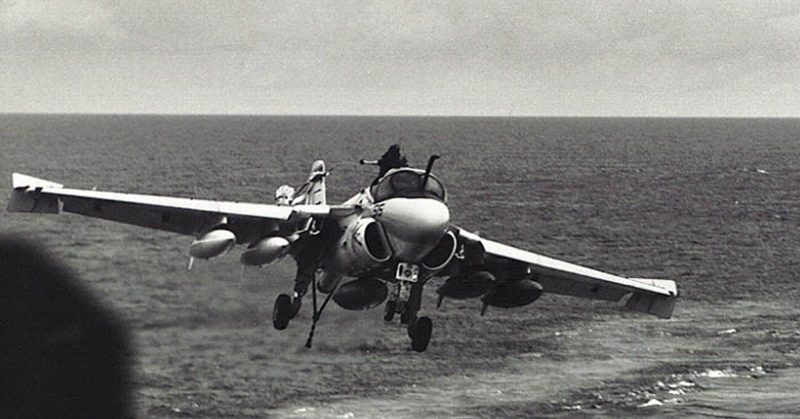Being launched off the flight deck of an aircraft carrier is a normal routine, but adrenaline junkie pilots love the radical feel of about 4 Gs.
On July 9, 1991, an A-6 Intruder modified to be a refueling aircraft was shot off the Abraham Lincoln in the Persian Gulf. Lieutenant Mark Baden was the pilot and had his friend and navigator (BN), Lieutenant Keith Gallagher beside him.
It was Gallagher’s birthday, and he advised Baden when they returned it would be his 100th trap recovery on an aircraft carrier.
A midair collision had occurred a few days earlier, and Baden was slightly nervous. On top of all the other odd circumstances, he was actually assigned the plane with his name emblazoned on the side – unlike in the movies, the pilots don’t always fly the plane with their name.
He made all the normal checks and touched all the buttons and switches. Satisfied he was ready for anything, the aircraft was blasted off the end of the carrier to accomplish the mission: to refuel other aircraft in the sky.
The refueling version of the A-6 was a KA-6D and was modified by removing radar and bomb equipment to install internal refueling gear. Some attack capability including a visual bombing ability was retained, but the overall design was to provide fuel in the air. This plane served the US Navy extensively from 1963 to 1997.
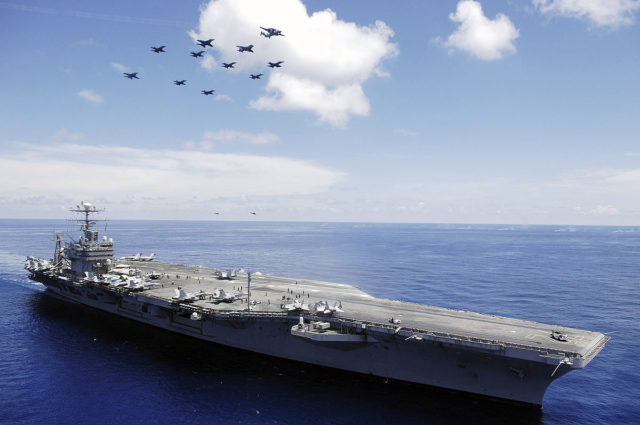
About mid-way through the flight – which is often considered the most boring time – the crew occupied themselves by performing fuel checks. One problem appeared – a stuck float in one of the tanks.
Baden decided to bounce the aircraft around a bit to try to unstick it. Flying at 8,000 feet, he maneuvered the plane to experience positive and negative G at 230 knots. His body floated out of the seat a bit. Then he heard a BANG!
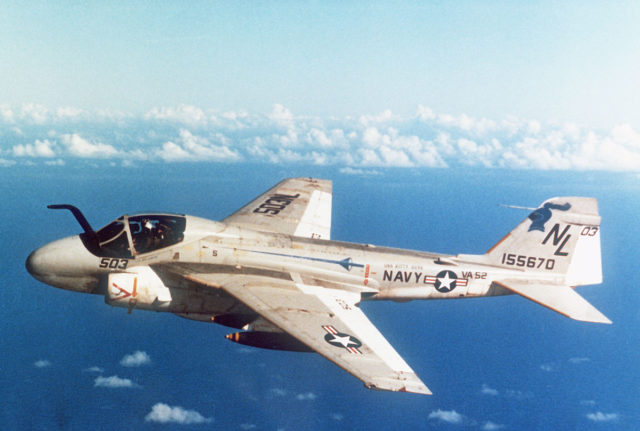
A sudden depressurization of the cockpit and rush of roaring wind caused Baden to look about for the problem. Expecting to see Gallagher’s face, he was shocked to be looking at the navigator’s knees. Alarmed, he quickly assessed the situation. The canopy was sealed against the windshield, but the Plexiglas was shattered. Gallagher’s upper body was outside the aircraft. He seemed to be stuck in the canopy!
From Gallagher’s point of view, he looked down, saw the top of the pilot’s helmet and realized he was sitting on top of A06 flying at over 200 knots! The forceful wind ripped off his mask and hit him in the face. His description: “It was like trying to drink through a fire hose.” He maneuvered his hands to hold near his chest. Fighting for air, he tried to think.
Meanwhile, Baden’s mind raced, wondering what had happened. One of the first things he thought was, “I need to slow down!” He quickly brought the throttles toward idle and thrust the flaps down. In a panic, he activated an emergency switch. As the plane slowly decelerated, Baden looked up to see rest of Gallagher’s body buffeting in the wind. The navigator’s head snapped about he appeared unable to breathe.
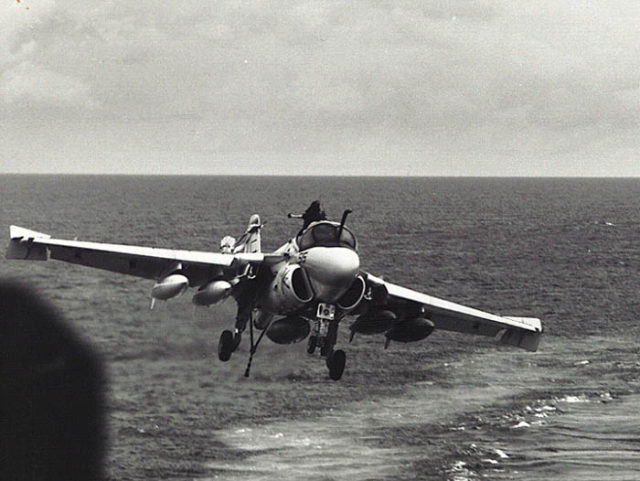
Gallagher’s face was distorted with the force of the wind. His cheeks and eyes were bulging. His neck strained dreadfully with the attempt to stay with the plane. At his belly were the razor-sharp, jagged edges of the Plexiglas threatening to pierce his body. Baden noted this and considered a quick stop, such as a tail hook catch, might impale his navigator on those knife-edged pieces.
The BN, fighting off unconsciousness, felt blind and lost. Gallagher stated the wind felt like a rushing wall of water. He couldn’t see and the roaring of the wind filled his ears. He realized he was suffocating and before blacking out he was aware of saying, “I don’t want to die.”
Baden saw Gallagher move his arms about and was relieved to see he was still alive. He grabbed the radio and called, “Mayday, Mayday, this is 515. My BN has partially ejected. I need an emergency pull-forward!” Immediately the reply burst from the radio, the calm voice of the air boss on the ship, “Bring it on.”
With the clearance to land on the aircraft carrier, Baden attempted to keep the speed as slow as possible and not fall out of the sky. Gallagher’s legs kicked wildly causing Baden to heave a sigh of relief: he was still alive. He watched the BN’s head and body buffeting about and feared his friend was being beaten to death.
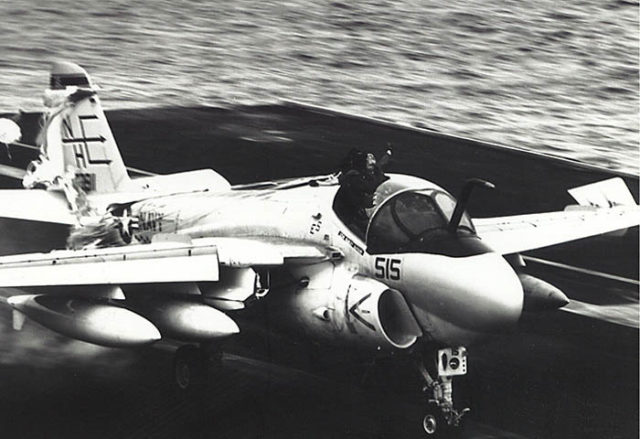
The Boss called over the radio to ask if the BN was still in the plane. Baden quickly responded, “Only his legs are still inside the cockpit,” not considering the horrific images people on the ship might be picturing in their minds. But the Boss understood. Declaring the deck clear and notifying other aircraft of the emergency occupied the Abraham Lincoln for a few minutes.
Baden was ready to land the plane and was setting up for a straight-in catch. Then his blood ran cold. Gallagher was no longer kicking. A glance through the canopy at the BN’s face cause the pilot to quickly turn and avoid looking at his friend. Gallagher’s head was on his shoulder and by all appearances, his neck was broken.
The closer to the sea, the more the front windscreen fogged over. Baden switched the defogger on high and was about to unstrap to wipe the glass with his hand when it cleared. Then he saw the ship had turned hard to the left. He uttered some inappropriate remarks toward the ship and prepared to chase the centerline.
Luckily, a landing signal officer advised the captain he could deal with the winds and to cruise “steady.” Baden was relieved to see a straight line wake behind the Abraham Lincoln.
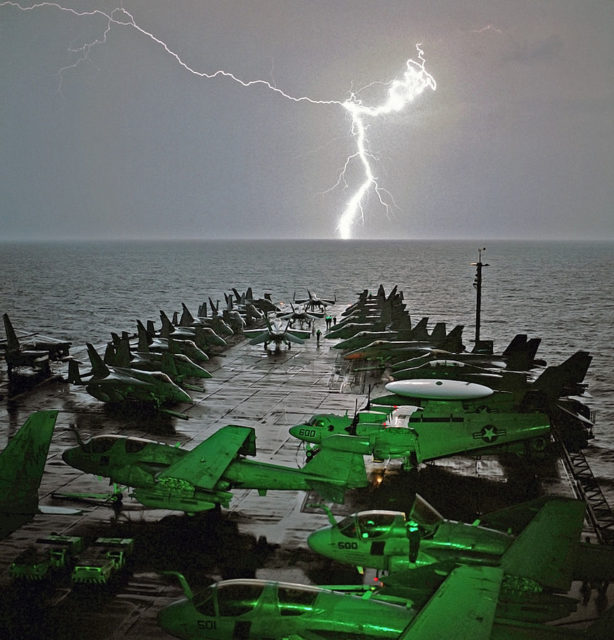
He drove in carefully to not cause any more damage to Gallagher. At the slower speed, he noted the Plexiglas shards, “looked like a butcher’s knife collection. I was very concerned that the deceleration of the trap was going to throw him into the jagged edge of the canopy.” Further, he had full intention to catch the first wire and get stopped as quickly as possible without cutting his navigator in half.
When the wheels hit the deck, Baden flinched when the hook didn’t catch. He raised the nose in an effort to pivot the plane so the hook would be lower. The relief was immense when he felt the tail hook connection with the wire. The thought of rolling off the deck and requiring a helicopter sea rescue would have capped the already horrible flight.
Baden killed the engines and made everything safe. Getting out of his side of the cockpit, he touched his friend’s arm. “Am I on the flight deck?” Gallagher asked. Relief washed over the pilot as he gripped the cold hand and waited for the medics. He was talking when the crash crew carefully lifted him from the plane. Baden headed straight for medical as soon as his BN had been extracted.
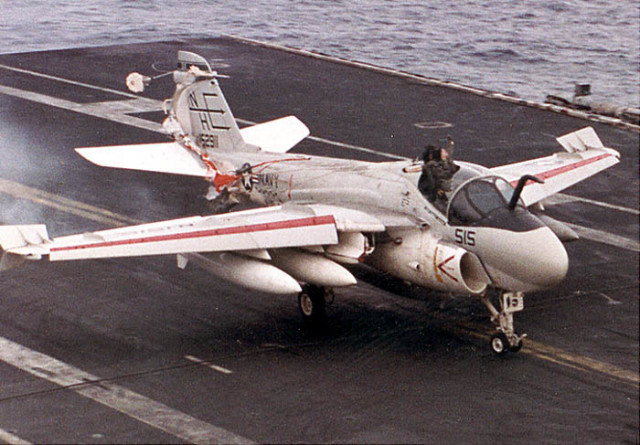
Gallagher had woken up when the A-6 stopped. He was amazed to be on the flight deck instead of walking through the pearly gates of heaven to see long lost relatives. The mishap which almost cost his life was countered by a series of miraculous happenings, including being pinned by the shoulder harness which prevented his unconscious body from surging forward during the landing.
Later Baden learned the only thing holding Gallagher in the aircraft were the parachute risers caught on the back of the seat. His astute actions saved his BN’s life. He was awarded the Air Medal, and the crew of the Abraham Lincoln received a letter from Gallagher’s wife thanking them for saving his life.
He recovered fully and continued his Navy career to retirement. He declared there were many reasons he survived that 26th birthday, one of which was some good old fashioned Irish luck.
